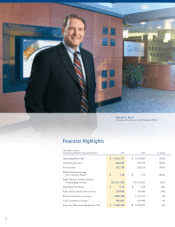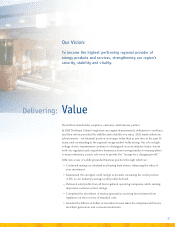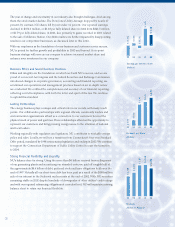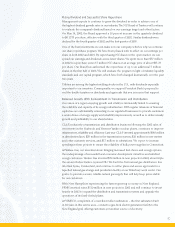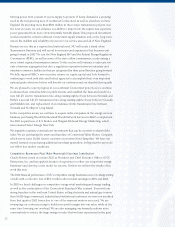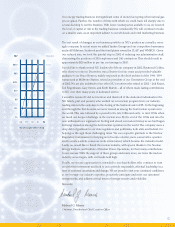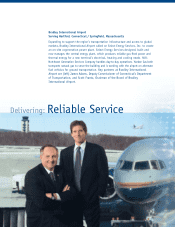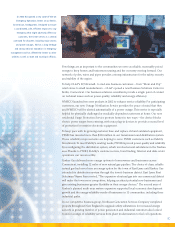Eversource 2002 Annual Report Download - page 8
Download and view the complete annual report
Please find page 8 of the 2002 Eversource annual report below. You can navigate through the pages in the report by either clicking on the pages listed below, or by using the keyword search tool below to find specific information within the annual report.
6
Moving power from pockets of excess supply to pockets of heavy demand is a pressing
need in the fast growing area of southwest Connecticut as well as elsewhere in New
England. By investing more than $500 million in three major transmission projects over
the next six years, we can enhance our ability to import into the region less expensive
power generated from more environmentally friendly plants. This proposed investment
would remedy the critical southwest Connecticut supply situation and, in the long-term,
ensure the stability and reliability of power for our service area and all of New England.
Because we see this as a regional and national need, NU will create a stand-alone
Transmission Business and will record its revenues and expenses in that business unit
going forward in 2003. We join the New England ISO and the Federal Energy Regulatory
Commission (FERC), as well as some of the state utility commissions, in advocating a
more robust regional transmission system. To this end we will continue to advocate not
only a business segregation but also a regulatory separation between intrastate and
interstate commerce facilities as they are categorized by their actual function going forward.
We fully support FERC’s new incentive returns on equity capital and look forward to
continuing to work with state and federal agencies to accomplish these very important
national goals, which we believe will benefit our customers and our shareholders equally.
We are pleased to report progress in our southwest Connecticut projects as we continue
to discuss these critical facilities in public forums and establish the basis and need for a
new 345-kV electric transmission line along existing rights of way between Norwalk and
Bethel; a second 345-kV transmission line along existing rights of way between Norwalk
and Middletown; and replacement of an undersea electric transmission line between
Norwalk and Northport, Long Island.
In the competitive arena, we continue to acquire niche companies in the energy services
business, purchasing Woods Electrical and Woods Network Services in 2002 to complement
the 2001 acquisitions of E.S. Boulos and Niagara Mohawk Energy Marketing, which
was renamed Select Energy New York.
We regularly scrutinize potential new investments that can be accretive to shareholder
value. We are purchasing the assets and franchise of Connecticut Valley Electric Company,
which serves some 10,000 electric customers in western New Hampshire. We have not
moved forward on purchasing additional merchant generation, feeling that the prices do
not reflect true market conditions.
Competitive Businesses Must Make Meaningful Earnings Contribution
Chuck Shivery joined us in June 2002 as President and Chief Executive Officer of NU
Enterprises, Inc. and has applied decades of experience to refine our competitive energy
businesses and develop a new model for success. I believe we will see the results of his
work this year.
The 2002 financial performance of NU’s competitive energy businesses was very disappointing
overall, with a collective loss of $54.1 million after modest earnings in 2001 and 2000.
In 2002 we faced challenges in competitive energy retail marketing and energy trading,
as well as the continuation of the Connecticut Standard Offer contract. Even with our
strong franchise in the northeast United States, selling electricity and natural gas to more
than 10,000 large commercial, industrial and institutional customers, we were not insulated
from first quarter 2002 losses due to one of the warmest winters on record. We are
revamping our contract pricing to build more profit margin into our sales, while at the
same time lowering our overhead. We are also managing our forward positions more
conservatively to reduce the large swings in value that we have experienced in the past.




